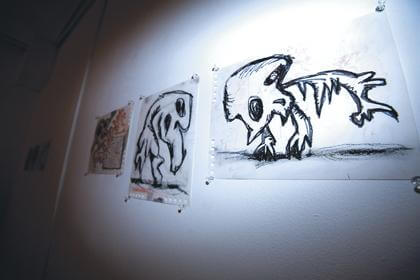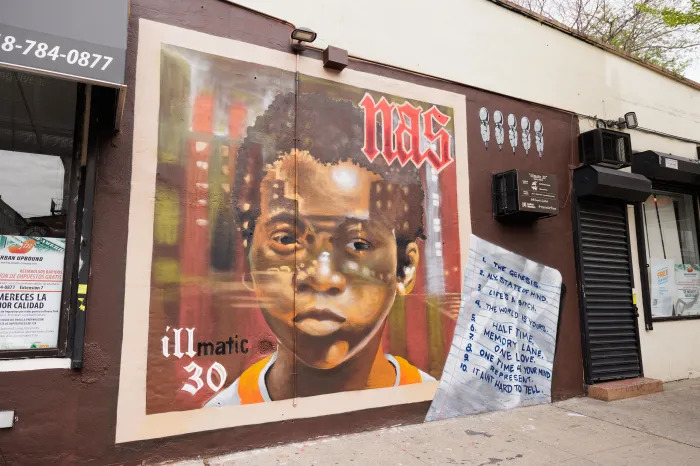By Jeremy Walsh
Western Queens may be enjoying a real-estate renaissance, but the artists who helped make it hip to cross the East River are finding it harder and harder to live in the areas they made desirable.
Long Island City, which most borough artists regard as the center of the Queens arts community, is seeing an exodus as more and more artists seek affordable living in neighborhoods farther east — or out of the borough altogether.
Long Island City gained its art scene reputation in the 1990s as artists fleeing rising rents in Manhattan neighborhoods like SoHo and the East Village discovered cheap housing and ample studio space in the western Queens neighborhood's many vacated industrial buildings.
Art institutions soon took notice. In 1999, the Museum of Modern Art established a presence there by acquiring P.S.1, a former school converted into a facility dedicated to contemporary art. Now, the nonprofit Queens Council on the Arts is planning to move to Long Island City from Woodhaven in order to be closer to what the group regards as the center of the borough's arts scene.
The neighborhood is also still home to many galleries, such as Dean Project on 45th Street and Art-O-Mat on Vernon Boulevard, as well as numerous studios and work spaces. Sites like Juvenal Reis Studios on 22nd Street, the Wills Art Deco Building on 21st Street and Crane St. Studios on Crane Street rent converted manufacturing and warehouse space to artists.
Flux Factory, a well-known artists' collective in Sunnyside, is located on the border of Long Island City. But the collective has lost its 15-year lease at the Metropolitan Transportation Authority-owned building as the transit authority plans to demolish the building to make way for a commuter rail tunnel.
Other former industrial areas in Long Island City, like Hunters Point, are being transformed as luxury high-rise condominiums supplant long-abandoned factories.
Kristy Schopper runs The Space, a Long Island City nonprofit that gives artists studio space to work on projects designed for unused open spaces in the neighborhood, such as traffic triangles. She complained that artists are being ousted by developers replacing the old industrial buildings with modern condominiums.
But the issue is just as much demographic as it is architectural, she said.
“I am equally concerned with the fact that those of us left, along with the area residents who make up this town, are being overshadowed and overwhelmed by all the new tenants in town,” she said.
So where will the next Long Island City be?
“Most artists are saying they won't tell,” Schopper said.
Kenny Greenberg, an artist who has lived and worked in Long Island City for 30 years, suggested it might not be in Queens at all.
“There are people going to the South Bronx and Brooklyn,” he said. “Even Bushwick is getting overpriced now.”
Greenberg, who works in neon lights and operates his studio and sign shop at Krypton Neon on 47th Avenue, also said three Long Island City artists he knows have moved back to Manhattan.
“The reality is the neighborhood is becoming a bedroom community,” he said. “Our services are becoming high-end bars and lounges.”
Other artists are banking on fledgling art neighborhoods like Jackson Heights, Sunnyside and Woodside.
For Hector Canonge, a Jackson Heights-based artist, the choice of neighborhoods was all about affordability.
“A big studio in Long Island City… it was so affordable three years ago,” he said. “Try to get space today — you have to be really lucky and you have to have money.”
On Northern Boulevard, where Canonge works, there is no concentrated artists' community yet, he said.
“However, there are places, like more toward 74th Street, 86th Street and 37th Avenue, where you can see a little bit more artist-types moving there,” he said.
Canonge is trying to establish a more cohesive space with his organization, Queens Media Art Development, which he hopes to use to offer workshops and work space for artists in Jackson Heights, Corona and Elmhurst.
Sunnyside, which borders on Long Island City, has begun offering some artistic contributions, like the annual Sunnyside Shorts film festival.
Teresa Ward, a former actress who co-produces the film festival, said she has seen a younger, more arts-oriented crowd move to the neighborhood in the 15 years she has lived there.
Woodside, which borders Long Island City to the north of Sunnyside, has Topaz Arts, a non-profit space for dancers and visual artists. Dancer Paz Tanjuanquio, who with partner Todd Richmond has run Topaz since 2000, said they came to Queens after being priced out of the East Village.
“Woodside was affordable,” she said. “We actually ended up living in Woodside after a few years of running the space. People are discovering that the further you move out into Queens, there is livable, affordable housing. I'm always amazed that people are moving into this neighborhood and I'm finding a lot more artists that are living here. It's nice.”
Lynn Quigley of Long Island City-based Plaxall Corp. also said she was working on affordable living and work space for artists, but was disappointed to learn she could not apply for subsidized affordable housing status and still earmark the residential units for artists.
“You can't set anything aside,” she said. “The rules don't allow it.”
But there are those resolved to stick it out in Long Island City. Betting on the continued primacy of the neighborhood, the Queens Council on the Arts is preparing to move from its current location in Forest Park into a new headquarters at a mixed-use complex proposed on 47th Avenue.
Artist Michele Bonelli, who has worked in Long Island City since 1996, said she and her partner are preparing to expand the artists' space they currently run to a much larger building with more studios to rent out.
“The objective is to maintain an affordable space,” she said.
Schopper said she hoped developers and artists can come up with a way to co-exist in Long Island City.
“Realistically, tourists from the United States and residents of Manhattan are already pretty unwilling to go into other boroughs,” she said. “How far do folks expect us to travel from the proximity of Chelsea and Museum Mile before we just pack it up and go somewhere more supportive?”
Reach reporter Jeremy Walsh by e-mail at jwalsh@timesledger.com or by phone at 718-229-0300, Ext. 154.






























